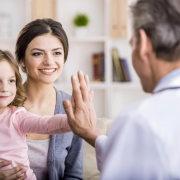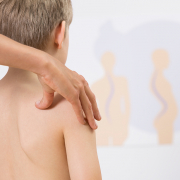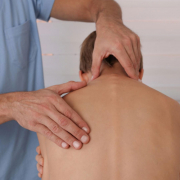Isico: our first 20 years
2003-2023: 20 years of activity, two decades of steady growth, from a small clinic in Milan staffed by a handful of specialists to our current network of centres in 37 cities and a team of 101 medical/health professionals and administrative staff. Over the past 20 years, we have looked after over 51,000 patients and created a Clinical and Scientific Institute, recording a number of achievements. We have set up and established a national congress and an ISICO Master course, offered both nationally and internationally, that now runs into several editions; replaced plaster casting with the “Sforzesco” brace, widely shown to be effective; created a blog and a customised app for patients as well as Scoliosis Manager, a software package for specialists; diffused our exercise-based approach to scoliosis (SEAS) through hundreds of courses worldwide; and launched a telemedicine service to support patients during the difficult months of the pandemic. A series of “stories” that, together, add up to an “incredible” two decades.
“These are results that we ourselves find rather remarkable, looking back,” says the director of Isico, Alberto Negrini. “They leave us feeling hugely proud and also grateful to the patients who have entrusted us with their care. We started out with a precise objective, which was also our mission for the first 10 years: to promote, in Italy, a scientific evidence-based approach to the conservative treatment of vertebral disorders. Building on the experience of the Scoliosis Centre in Vigevano, which has been active in the field since the 1960s, we built a working group able to export our approach and treatment model.
This mission allowed us to clearly define our purpose — the rehabilitation of vertebral pathologies —, our method — an approach based on treatments validated in the scientific literature —, and our geographical horizons — the whole of Italy. Into all this, we weaved some fundamental elements, such as a humane and person-centred approach, the formation of therapeutic teams, and continuous staff training.
On the clinical side, it was immediately clear that our work should be built around two main areas: vertebral deformities (scoliosis, kyphosis, etc.) and pain (particularly low back pain, and neck pain).
From the very early years, we found that the real demand on the ground was in the first of these areas: patients with vertebral deformities were clearly struggling to find valid and effective answers. Consequently, this area of our activity grew far more quickly than the other, to the point that it now accounts for 85% of all the clinical work we do.
Our scientific approach led us to start continuously monitoring developments in the scientific literature, something we do in constant collaboration with the Gruppo di Studio della Scoliosi e delle patologie vertebrali (GSS) — scoliosis and spinal disorders study group, and forerunner of ISICO, which was set up in 1978 —, but also to play an active part on the global scientific stage, thus entering a world in which, when we started out, little was known or said about the non-surgical treatment of spinal deformities. This was the start of our extensive scientific activity, which quickly earned recognition abroad and has led to the publication of numerous works (over 230 to date), most with immediate clinical applicability. Another important aspect is the support we lent to the creation of what was about to become the sector’s international scientific society of reference (SOSORT), which, with the help of our specialists, was founded in Milan during the 2005 international congress organised by ISICO at the Palazzo delle Stelline.
And so on to our aim to cover the whole of Italy. This was a highly ambitious target, which led us to adopt, from the outset, an organisational model that, based on an information system developed internally, was designed to allow us to grow beyond our initial (few) clinics,” Alberto Negrini explains. “These investments of time and resources left us in considerable difficulty in the first years, when our economic performance was very poor, but they also sustained our growth once the work done at the start began to bear fruit, allowing us to launch an expansion that has been constant, with the result that we are now present in 37 cities and 16 regions.
Indeed, 10 years in, when the goal that had initially seemed so ambitious was gradually being reached, our horizons expanded. Thanks to the growth of SOSORT, our participation in European research projects, and the growing demand for training from other countries, the international side of our activity took on an increasingly important role. Hundreds of patients from abroad have come to be treated in our clinics, and we have trained thousands of health professionals abroad through courses including our ISICO Master course.
Looking back, we can certainly say that this has been a success story, and I would say that the key to this success lies, more than anything, in the people that have worked at ISICO over these past 20 years, building and guaranteeing its reputation” Negrini says. “Thanks to their approach, which is both caring and professional, patients trust us and believe in us, which translates into very high approval ratings and has a positive “word of mouth” effect. At the same time, the rigorous way in which we work and record data has given us credibility in the eyes of other professionals. And our name has spread both in Italy and abroad, though numerous visits to and internships at our clinics, and also through our published scientific work.”
What do the next 20 years hold for ISICO? “Starting from where we are today, and bearing in mind that, as the pandemic has taught us, you never know what might be just around the corner, there are two things we have in mind,” Negrini concludes. “On the one hand, to go on expanding in Italy by developing spaces that will allow us to diversify what we do, and on the other, to keep expanding our activities abroad, through research projects and new opportunities for collaboration. Another 20 years in which we will go on always striving to offer patients the best possible care, based on scientific evidence but also on medical and human experience, because the therapeutic team must always focus on the whole person.”










